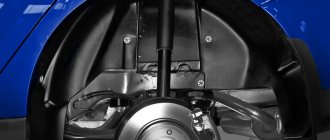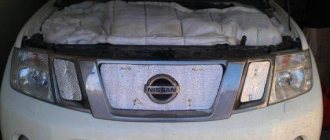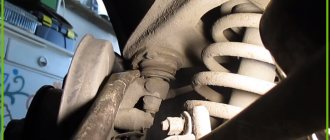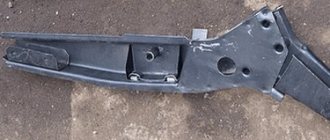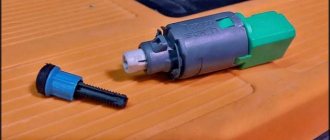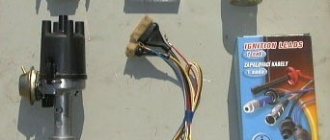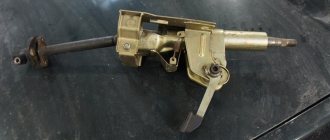Hello dear readers of the kuzov.info blog!
This review article will tell you about the types of car waxes, their application, advantages and disadvantages.
There are hundreds of wax-based products available today. They can be divided into the following categories:
- Liquid waxes
- Waxes in paste form
- Wax sprays
- Sealants for body protection (sealants)
For some car enthusiasts, waxing a car is a huge pleasure. Thus, they seem to achieve perfection in the appearance of the car. They are ready to polish the body every day. Such people are willing to spend a lot of time waxing, using products that are applied in several stages.
For other people who value their time very much, but at the same time want their car to be well-maintained, they need a simple and quick solution to restore the shine and protect the body. For both categories of people, there are products that can give excellent results. Let's look at the preparation and waxing process.
You need to start by cleaning the surface
Before applying any protective waxes, the car body must be washed. Simply washing the body will not be enough; ingrained dirt and stuck solid particles remain on the surface. For more thorough cleaning after washing, universal cleaning waxes, cleaning clays and other compounds are used. Let's take a closer look at the advantages and disadvantages of these cleaning methods.
The reason Turtle Wax 2in1 waxes have been so popular is because they are both a cleaner and a waxing product. Many people now use a synthetic cleaning clay first and then apply wax to the clean paint.
Wax composition 2in1 (cleaner and protection wax) vs cleaning clay + wax
Most modern cars have a clear coat, even if the paint is not metallic. This coating differs from coatings without varnish. Modern varnish coatings are applied in a thin layer. This is done in order to save money and reduce the final cost of the car. Thus, it is not correct to regularly use abrasive products to clean and polish the body. 2in1 wax compounds are both wax-based cleaners and polishing compounds. As cleaners they contain abrasive particles. The reserve thickness of the varnish will not allow you to do a lot of abrasive polishing. It is advisable to use cleansing clay and then use wax that does not contain cleaners. You can read more about using cleansing clay here.
Polish to remove imperfections...before waxing
If the car you are going to wax has minor scratches and abrasions, then you first need to apply abrasive polishing. Some people mistakenly believe that applying wax will remove minor defects. Before applying wax, you need to remove small scratches, traces of dried water, and abrasions. All this can be eliminated or smoothed with abrasive polishing. Wax will simply preserve the cleaned and restored surface.
What are the criteria for choosing wax?
When choosing car wax, it is recommended to pay attention to the following characteristics:
- Protective effect. In summer, car coating needs protection from ultraviolet radiation, and in winter – from moisture and dirt.
- Glossy finish. All manufacturers promise results, but in practice this is not always the case. Therefore, it is recommended to read consumer reviews before purchasing.
- Compound. This characteristic is important for those car enthusiasts who prefer to use natural products.
- Price. This indicator does not always indicate quality. Before purchasing, it is recommended to consult with specialists.
Applying car wax using a spray
Spray wax can be considered the easiest way to apply wax protection. Spray wax now rivals the best liquid and paste waxes. Wax sprays use polymers that provide good protection.
Many polymer spray-on protective coatings can be applied even in open sun. Of course, for best results it is better to use them in the shade. For example, Meguiar's Ultimate Quik Wax (spray wax) can provide the same level of protection as Meguiar's NXT Generation Tech Wax.
To apply spray wax, you must first thoroughly wash your car. Next, you need to prepare a special microfiber towel for polishing. You need to apply the wax and immediately rub it with this towel. Thus, it is better to treat the surface in small segments. After treating the entire panel, you need to turn the towel over and, using the clean side, you need to finally polish the entire surface again. This way you will evenly distribute the applied protective composition.
How to properly wax a car body
Waxing a car body, types of wax, as well as the main nuances, body treatment process and price. At the end of the article there is a video review of waxing.
There are many ways to protect the car body from damage of this kind. You can open it with a special polish and keep the car in a dry garage, carefully go through every detail and immediately sound the alarm at the slightest hint, but an equally effective way is to wax the car. Let's consider the processing principle, the type of wax and the price of such protection for the car body.
Application of liquid wax and paste wax
In the past, paste waxes were the most preferred as they gave good results. Nowadays, many manufacturers offer liquid and paste versions of wax, which have the same composition. What is their difference? It all depends on preference and application method. Many people find that paste waxes are more suitable for hand-polishing, while liquid waxes are more suitable for use with a polisher.
There is no need to overdo it with the amount of wax applied. This applies to both paste and liquid wax. Less is better. You should get a uniform thin wax layer. For modern polymer waxes, a thick layer is not necessary. A thin layer dries faster and is easier to rub.
When applying liquid and paste waxes, follow these instructions::
- Treat the surface in the shade, where there is no direct sunlight.
- Use a special applicator recommended by the manufacturer or available with wax. A foam sponge is usually suitable.
- Treat body panels in segments of 20 - 40 square centimeters. Some products can be applied to the entire car before rubbing.
- You need to check in the instructions for the product you are using whether you need to wait for the wax to dry before rubbing it. Some products require drying before rubbing, and some need to be rubbed in immediately after application.
- Always use a small amount of rubbing wax. Using too much wax will only waste it. If you apply a lot of wax and it doesn't rub well, try switching sides of the microfiber towel and repeat rubbing with the clean side.
After waxing, the surface should be smooth and shiny, without streaks or smudges of wax.
What to do if, after all the work done, you still have streaks and areas where the wax is difficult to rub. There are several techniques for this. The simplest one is to park the car under the sun for 10–15 minutes. The wax will heat up, but you can’t let it get hot, then again you need to go into the shade or garage. Next, using a clean microfiber polishing towel, you can easily buff the wax to a shine.
How to apply cold wax
Cold wax is usually included in the group with liquid components. It can be applied by hand. Usually among cold products there are those that lose their properties after the first wash, that is, they are simply washed off.
This is an irrational way to protect a car, but it has also found its niche in body waxing products. It is recommended to cover your car with cold wax every time after a car wash visit. Despite the low cost, constant use of wax will not be so cheap.
Cold wax is usually included in the group with liquid components and can be applied manually
To ensure a high-quality car wax coating, you must adhere to the following rules:
Transparent sealants (sealants) to protect paint surfaces
In addition to classic waxes, there are transparent sealants (sealants) to protect the painted surface. They consist entirely of synthetic ingredients. Paint sealants provide longer lasting protection than waxes. They are very easy to apply. The disadvantage is the shallow, superficial shine they give. Some waxes with natural ingredients or a combination of natural and synthetic ingredients provide a deeper shine.
Before applying the sealant, you need to wash and dry the car body. Paint protection sealants are hydrophobic, so no water should come into contact with the surface during application.
The main principle of applying such sealants is that you need to apply a thin layer of the composition and leave for 20-30 minutes. Such synthetic sealants are applied immediately to the entire surface. Can be applied in a circular motion, distributing the composition evenly. There is no need to grind the composition, as is done with classic waxes.
Sealants can also be applied to glass, chrome parts and plastic.
How to choose wax for car body treatment
The choice of wax for treating the car body should be approached very carefully, since the result of how the final result will look will depend on some factors. The first thing you should pay attention to is the price of one set; often cheap ones lose their properties before the date indicated on the package.
To treat the body of a car no older than five years, it is better to use liquid or solid wax. The paintwork is not yet so “tired” and the film lays down evenly. For older cars (5 years and older), it is better to use abrasive mixtures or wax-based polishes. In this case, microcracks and defects in the paintwork are better filled.
Abrasive substances are most often used for cars whose paintwork has obvious defects (cracks and paint fading). When choosing such a material, you should take into account the hardness, since you need to smooth out cracks in the paintwork as efficiently as possible or restore other defects.
Car body polish at home
Every car enthusiast knows that polishing a car body helps solve several very important problems. By applying car polish to the surface, you will simultaneously ensure:
- protection from external atmospheric influences;
- protection against damage to the body by aggressive environments;
- corrosion prevention;
- long-term preservation of the integrity of the car’s paintwork;
- removal of scratches, chips and microdamages;
- protection of car paint from fading;
- spectacular shine.
Car body polishing
Modern industry offers consumers a wide selection of products for car body polishing. This is a polymer polish, car wax, liquid glass, as well as various other options.
However, some car owners do not really trust industrial products, preferring to prepare polish and apply it to the surface of the car body at home.
Pros and cons of car waxing
This method of protecting paintwork has more than enough advantages. It is popular among domestic car enthusiasts for the following reasons:
- creates a durable and aesthetically attractive coating, restores its shine;
- the number of dirt particles penetrating into cracks and irregularities is reduced, which makes it easier to maintain the car;
- it takes less time to dry the vehicle;
- a high-quality protective coating is created from harmful ultraviolet radiation, dust and dirt.
Any car can and should be coated with products based on liquid or solid wax. Manufacturers often even advise performing a similar procedure before the first sale of a new car at a dealer showroom. Moreover, body waxing is recommended for those cars that have been polished to restore worn-out coating.
Despite the many positive aspects, the car waxing procedure also has its disadvantages. Among them, we can highlight the high cost of some work if it is performed at a professional service station using foreign auto chemical products from renowned manufacturers. Another point could potentially be related to the possibility of noticeable stains or streaks appearing on the body if the procedure is not performed professionally.
Applying liquid wax to a car


